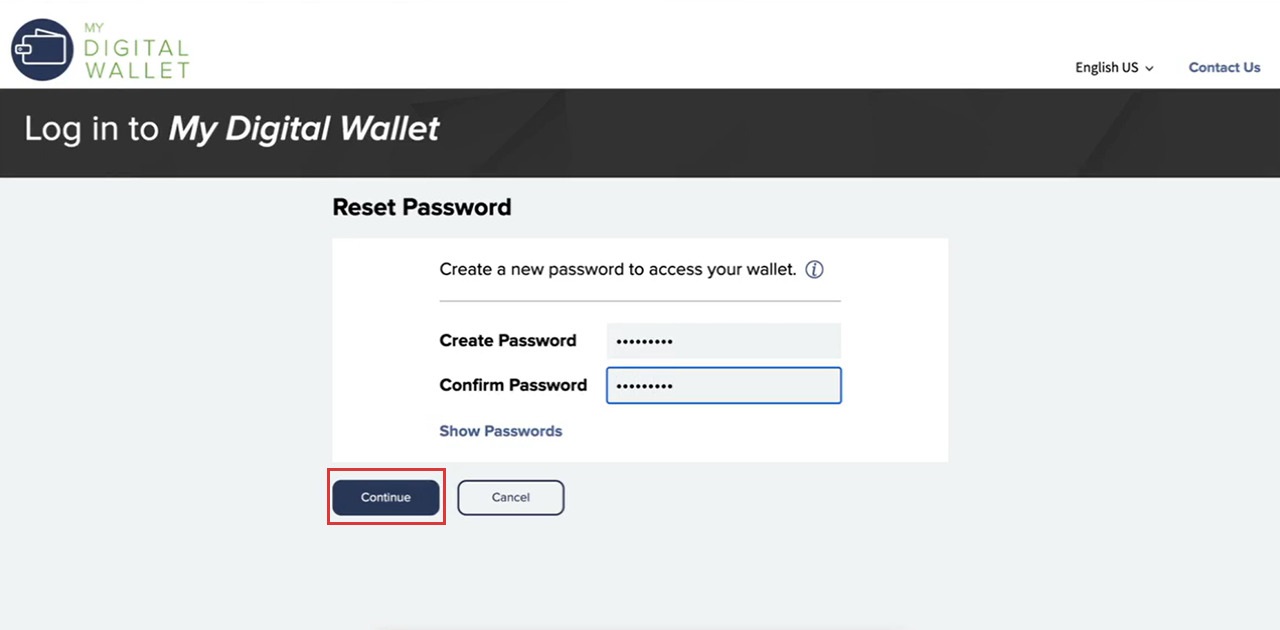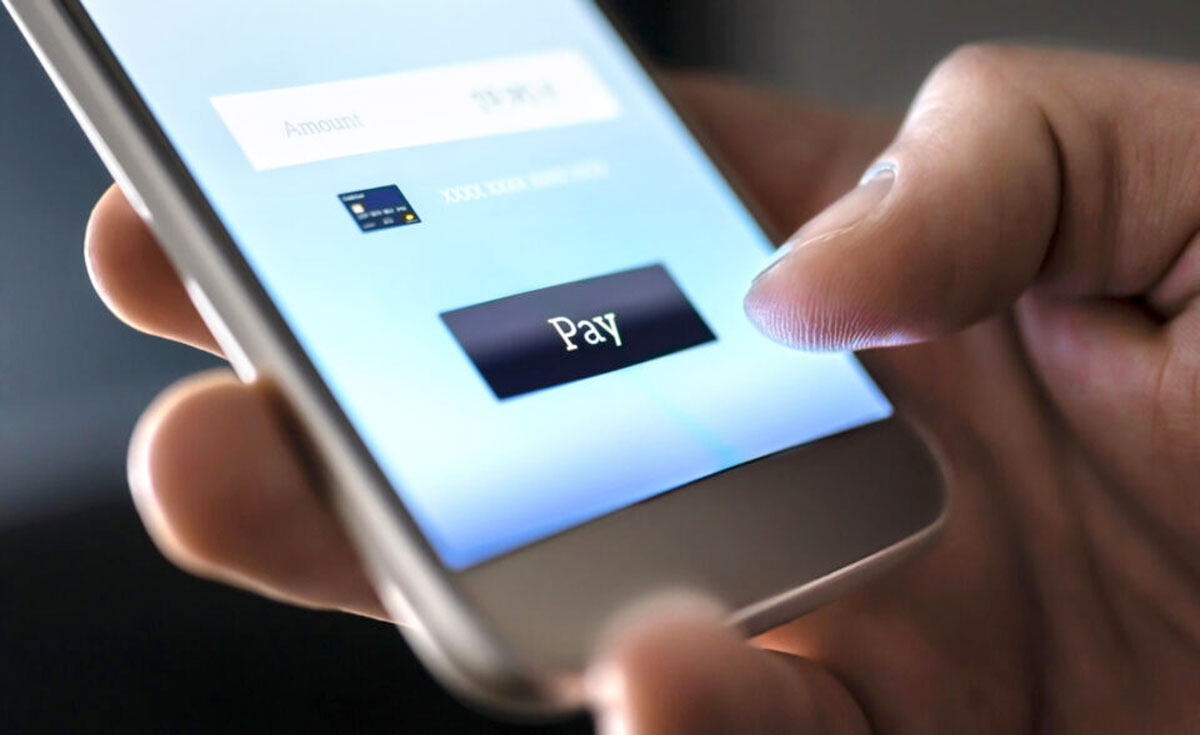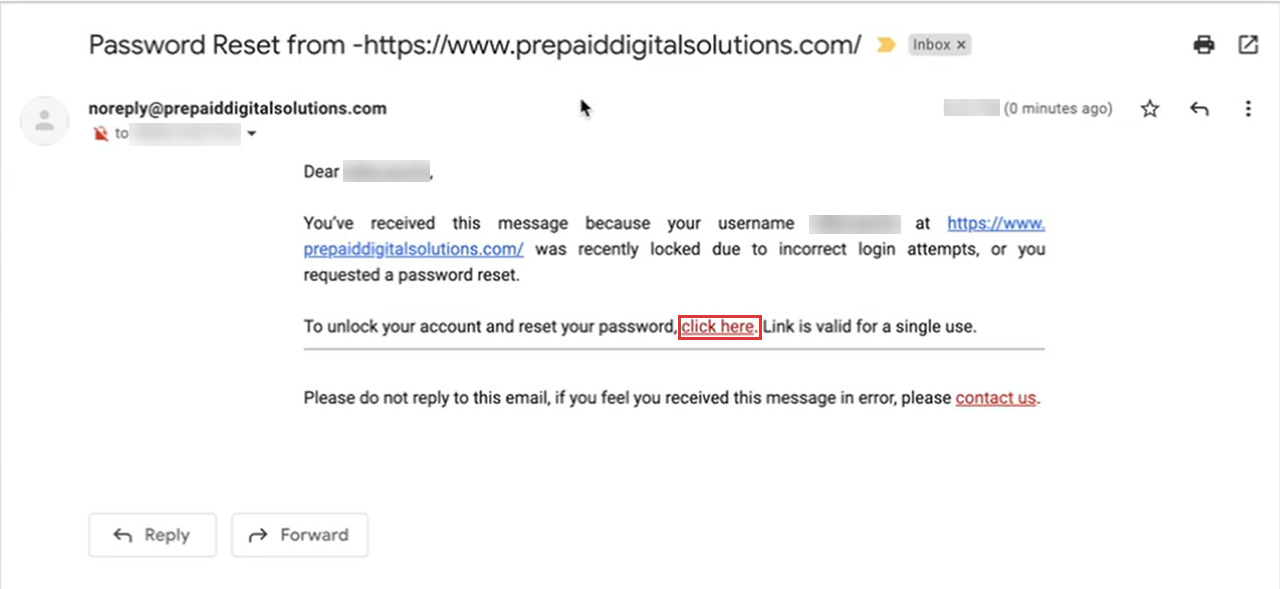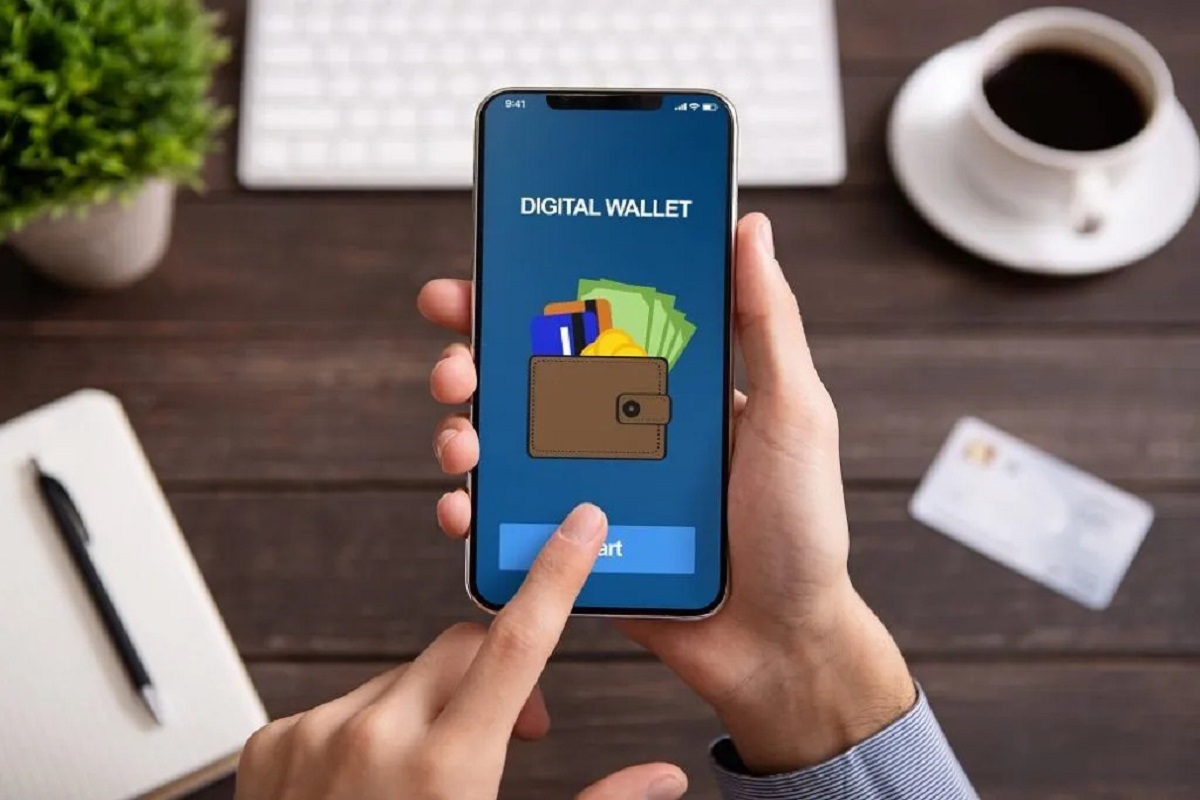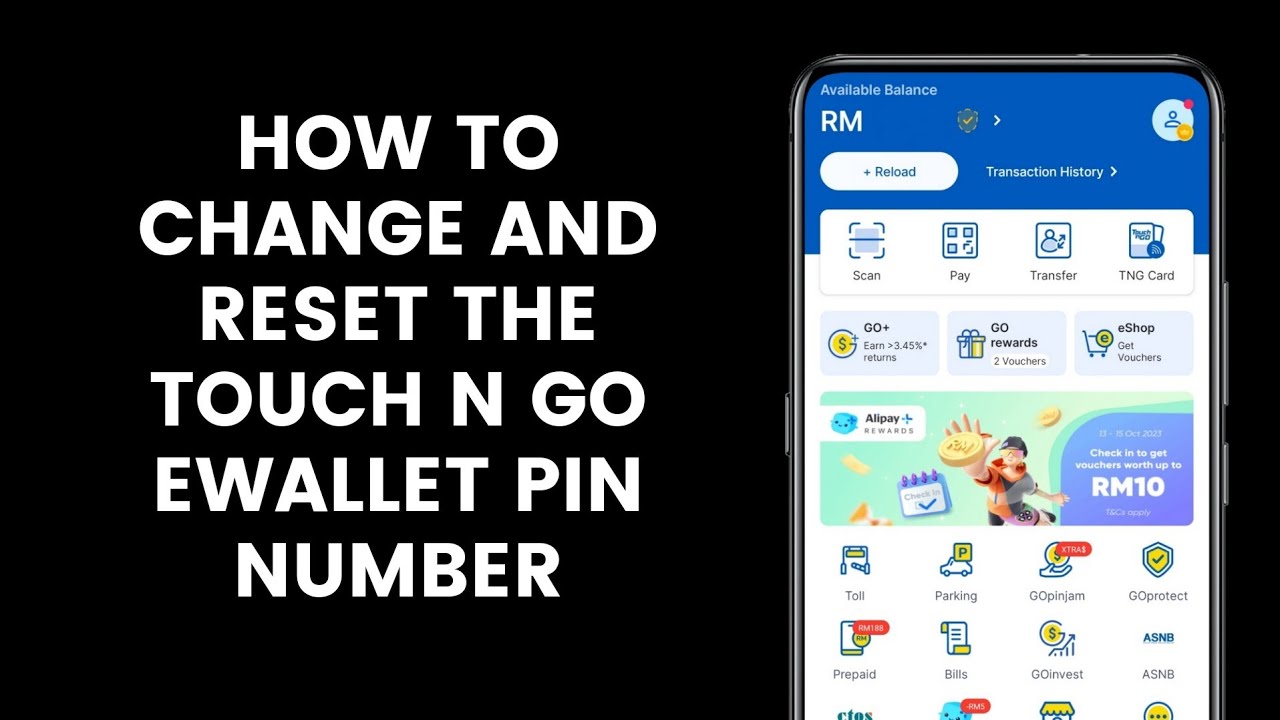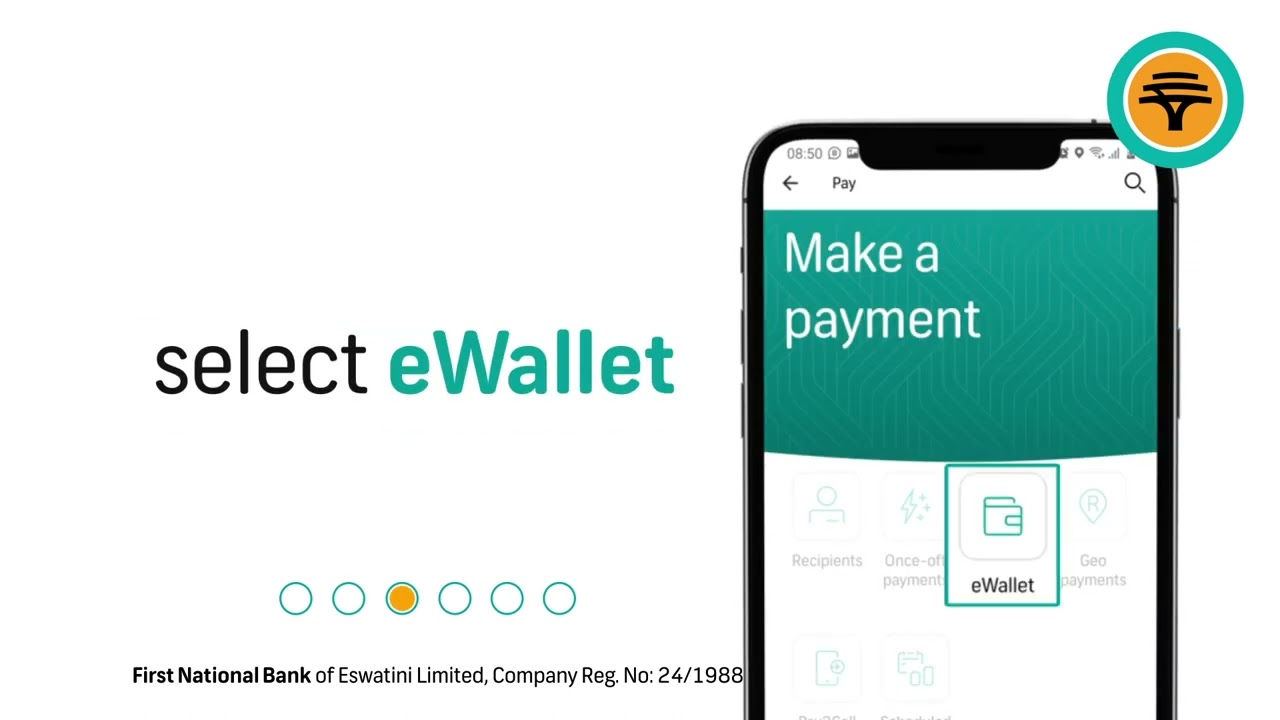Introduction
Resetting your e-wallet password is an essential step in maintaining the security of your digital financial transactions. With the increasing popularity of e-wallets, it is important to understand the importance of safeguarding your account from unauthorized access. Whether you use an e-wallet for online shopping, bill payments, or money transfers, resetting your password periodically is a crucial security measure.
By regularly resetting your e-wallet password, you can minimize the risk of identity theft, fraud, and unauthorized transactions. Moreover, it allows you to stay in control of your financial information, protecting your hard-earned money.
Resetting your e-wallet password may seem like a daunting task, but it is actually a simple process that can be done in just a few minutes. In this guide, we will walk you through the steps of resetting your e-wallet password, ensuring the security of your funds and personal information.
Before diving into the details, it is important to note that the specific steps may vary depending on the e-wallet provider you are using. However, the general guidelines provided here will give you a solid understanding of the process and help you adapt it to your specific e-wallet.
So, whether you have forgotten your e-wallet password, suspect unauthorized access, or simply want to strengthen security, read on to learn how to reset your e-wallet password effectively.
Understand the Importance of Resetting Your E-Wallet Password
As technology advances, so do the techniques used by cybercriminals to gain unauthorized access to sensitive information. One of the most effective ways to protect yourself and your finances from potential threats is by regularly resetting your e-wallet password.
By resetting your e-wallet password, you are taking an important step towards maintaining the security of your financial transactions. Here are a few reasons why resetting your e-wallet password is crucial:
- Prevent Unauthorized Access: Resetting your password regularly helps to minimize the risk of unauthorized access to your e-wallet account. This can provide you with peace of mind, knowing that your funds and personal information are secure.
- Protect Against Identity Theft: E-wallets often store personal and financial information, such as your name, address, and banking details. By regularly resetting your password, you reduce the likelihood of falling victim to identity theft, as it makes it harder for hackers to gain access to your account.
- Defend Against Fraudulent Transactions: Resetting your e-wallet password can help prevent fraudulent transactions from occurring in your account. By regularly changing your password, you decrease the chances of someone using your account without permission and making unauthorized purchases or transfers.
- Maintain Control of Your Finances: Your e-wallet contains your hard-earned money, so it’s crucial to maintain control over your funds. By resetting your password, you ensure that only you have access to your account, reducing the risk of financial loss or mismanagement.
While it may be tempting to use the same password for multiple accounts or keep using an old, familiar one, doing so raises the risk of compromising your e-wallet security. It is always best practice to use unique, strong passwords and refresh them regularly.
Remember, being proactive about resetting your e-wallet password is a simple yet effective step you can take to enhance the security of your financial transactions. By staying vigilant and regularly updating your password, you decrease the likelihood of falling victim to cyber threats and keep your e-wallet protected.
Determine the Type of E-Wallet You’re Using
Before you begin the process of resetting your e-wallet password, it’s important to determine the type of e-wallet you’re using. This will help you understand the specific steps and requirements for resetting your password.
There are various types of e-wallets available in the market, each with its own interface and functionalities. Some popular examples include PayPal, Venmo, Apple Pay, Google Pay, and many more. The steps for resetting your password may vary depending on the e-wallet provider you’re using.
To determine the type of e-wallet you’re using, follow these steps:
- Check the E-Wallet App or Website: Open the app or visit the website of your e-wallet provider. Look for the logo or name of the e-wallet to confirm the specific type you’re using.
- Review Your Account Details: Within your e-wallet account, navigate to the settings or profile section. Here, you may find specific information about the type of e-wallet you have. Look for any indications or labels that identify the brand or type of e-wallet.
- Search Your Email: If you’re having trouble identifying the type of e-wallet you’re using, search your email inbox for any registration or account confirmation emails from your e-wallet provider. The email subject or sender may provide clues about the type of e-wallet you have.
- Consult Customer Support: If you’re still unsure about the type of e-wallet you’re using, contact the customer support of your e-wallet provider. They will be able to assist you in identifying the e-wallet type and provide further guidance on the password reset process.
Once you have determined the specific e-wallet you’re using, you can proceed to the next steps in resetting your password. Remember, understanding the type of e-wallet you have is essential in ensuring that you follow the correct instructions and avoid any unnecessary confusion in the password reset process.
Access the Password Reset Option
Now that you have determined the type of e-wallet you’re using, it’s time to access the password reset option. The process of accessing the password reset option may vary depending on the e-wallet provider, but here are some general steps to follow:
- Open the E-Wallet App or Website: Launch the e-wallet app on your mobile device or visit the official website using your preferred browser.
- Go to Account Settings: Look for the “Settings” or “Account” section within the e-wallet app or website. This is where you’ll typically find options to manage your account details.
- Locate the Password Reset Option: Within the account settings, search for the option to reset your password. It may be labeled as “Change Password,” “Reset Password,” or something similar. Some e-wallet providers may have a dedicated “Security” or “Privacy” section where you can find the password reset option.
- Click or Tap on the Password Reset Option: Once you’ve found the password reset option, click or tap on it to begin the process.
- Follow the Prompts: The e-wallet app or website will guide you through the password reset process. This may involve verifying your identity, answering security questions, or confirming your email or phone number.
- Create a Strong New Password: When prompted, enter a new password for your e-wallet account. Make sure to choose a strong, unique password that includes a combination of letters, numbers, and special characters. Avoid using easily guessable passwords or personal information.
- Confirm the New Password: Once you’ve entered your new password, you may be asked to confirm it. Double-check that you have entered the correct password to avoid any login issues later on.
- Save the Changes: After confirming the new password, save the changes to your e-wallet account settings. Some e-wallet apps or websites may require you to press a “Save,” “Update,” or “Submit” button to finalize the password reset process.
Following these steps will allow you to access the password reset option and begin the process of creating a new password. Remember to choose a strong and unique password to ensure the security of your e-wallet account.
Verify Your Identity
Verifying your identity is a crucial step in the password reset process to ensure the security of your e-wallet account. The methods for identity verification may vary depending on the e-wallet provider, but here are some common ways to verify your identity:
- Security Questions: Some e-wallet providers may require you to answer security questions that you previously set up during the account registration process. These questions are designed to verify your identity and ensure that only authorized individuals can reset the password.
- One-Time Password (OTP): Many e-wallet platforms utilize the use of OTPs, which are temporary codes sent to you via email, SMS, or through an authenticator app. When prompted, enter the OTP provided to verify your identity before proceeding with the password reset.
- Email or Phone Confirmation: E-wallet providers may require you to confirm your identity by clicking on a verification link sent to your registered email or by entering a code sent to your registered phone number. This extra step adds an additional layer of security to ensure that you are the rightful account owner.
- Biometric Authentication: Certain e-wallet apps may offer biometric authentication options such as fingerprint or facial recognition. By using your unique biometric data, the app can verify your identity before allowing you to reset your password.
- Customer Support Assistance: If you encounter issues with verifying your identity or if you are unable to access the required authentication methods, reach out to the customer support of your e-wallet provider. They will guide you through the verification process and help you reset your password securely.
Remember, the purpose of identity verification is to protect your account from unauthorized access. By successfully verifying your identity, you can proceed with confidence in resetting your e-wallet password and ensuring the security of your financial transactions and personal information.
Choose a New Password
Choosing a strong and unique password is crucial for securing your e-wallet account. When resetting your password, follow these guidelines to create a new password that is difficult to guess:
- Length: Opt for a password that is at least 8 to 12 characters long. Longer passwords are generally more secure.
- Complexity: Use a combination of uppercase and lowercase letters, numbers, and special characters (@, #, !, etc.) in your password.
- Avoid Personal Information: Avoid using easily guessable information such as your name, birthdate, or phone number in your password. Cybercriminals may be able to obtain this information through social engineering or data breaches.
- Avoid Common Words or Patterns: Stay away from common dictionary words, phrases, or predictable patterns. Hackers often use automated tools that can quickly crack passwords based on common choices.
- Unique Password: Each of your online accounts should have a unique password. Avoid reusing passwords across multiple platforms to minimize the impact if one account is compromised.
- Consider a Password Manager: Using a password manager can help generate strong, randomized passwords for you and securely store them. This eliminates the need to remember multiple complicated passwords.
- Regular Updates: While resetting your password, take the opportunity to update it periodically. Regularly changing your password adds an extra layer of security to your e-wallet account.
By following these guidelines, you can significantly enhance the security of your e-wallet account and protect your financial transactions from unauthorized access. Remember, a strong and unique password is a key defense against potential hacking attempts and identity theft.
Once you have chosen a new password, it’s important to proceed with the next steps to update your e-wallet security settings and test the effectiveness of your new password.
Update Your Security Settings
After choosing a new password for your e-wallet account, the next crucial step is to update your security settings. This helps to reinforce the security of your account and protect your financial transactions. Here are some key security settings to consider:
- Enable Two-Factor Authentication (2FA): Two-factor authentication adds an extra layer of security by requiring a second form of verification, such as a unique code sent to your mobile device or an authenticator app, in addition to your password. Enable 2FA if your e-wallet provider offers this feature.
- Review Privacy Settings: Take the time to review and customize your privacy settings. Limit the amount of personal information that is publicly visible or shared with other users. Adjust settings according to your comfort level and the level of privacy you desire.
- Monitor Account Activity: Regularly review your account activity for any suspicious transactions or unauthorized access. Many e-wallet providers allow you to set up notifications or alerts for account activity, making it easier to identify any suspicious behavior.
- Secure Your Device: Ensure that the device you use to access your e-wallet account is secure. Set up a strong device password, use biometric authentication if available, and keep your device’s operating system and security software updated.
- Regularly Check for Updates: Keep your e-wallet app or software up to date. Updates often include important security patches and bug fixes that improve the overall security of the application.
- Be Wary of Phishing Attempts: Be cautious of phishing attempts, where attackers may try to trick you into revealing your e-wallet login credentials through fraudulent emails or websites. Double-check email senders, avoid clicking on suspicious links, and only log in to your e-wallet through the official app or website.
- Use a Secure Internet Connection: When accessing your e-wallet account, ensure you are using a secure internet connection, especially when entering sensitive information or making financial transactions. Avoid using public Wi-Fi networks, as they can be vulnerable to eavesdropping and data theft.
Updating your security settings plays a crucial role in safeguarding your e-wallet account and protecting your financial transactions. By implementing these recommended security measures, you can significantly reduce the risk of unauthorized access and ensure a safer online experience.
Remember, staying proactive about security and regularly reviewing and updating your settings is an ongoing process to maintain the highest level of protection for your e-wallet account.
Remember Your New Password
After resetting your e-wallet password and updating your security settings, it is essential to remember your new password. While it is advisable to choose a strong and unique password, it can be challenging to memorize complex combinations of characters. Here are some tips to help you remember your new password:
- Use Mnemonics: Create a memorable phrase or sentence using the first letter of each word in your password. For example, if your password is “P@ssw0rd!”, you could create a mnemonic like “Please@SaveStrongw0rds!”. This helps you associate the password with a familiar phrase.
- Associate with Personal Information: Choose a password that relates to a personal event, date, or memory that you are unlikely to forget. For example, if your first car was a Volkswagen Golf, you could create a password like “VWGolf_2005!”. Just ensure that the information is not easily guessable by others.
- Use Password Managers: Consider using a reputable password manager to securely store and manage your passwords. These tools allow you to generate strong, randomized passwords and store them in an encrypted vault accessible through a master password or biometric authentication.
- Avoid Writing It Down: While it may be tempting to write down your new password for reference, avoid doing so if possible. If you must write it down, keep it in a secure location away from prying eyes, such as a locked drawer or a password-protected digital document.
- Practice Regularly: Repeat your new password frequently to reinforce your memory. This can be especially helpful during the first few days or weeks after changing your password.
- Consider Password Recovery Options: Some e-wallet providers offer password recovery options, such as security questions or alternative contact methods. Set up these recovery options in case you ever forget your password or need to regain access to your account.
- Change Password If Necessary: If you find it difficult to remember your new password even after trying mnemonic techniques and regular practice, it may be necessary to change it to something more memorable. However, ensure that the new password still meets the criteria of being strong and unique to maintain the security of your e-wallet account.
Remembering your new password is crucial to accessing your e-wallet account without any issues. By implementing these tips and techniques, you can enhance your ability to recall your password while maintaining the security of your e-wallet account.
Lastly, it is important to note that while remembering your password is essential, it is equally important to keep it confidential and never share it with anyone. Your password is your key to securing your e-wallet account and financial transactions, so always treat it with the utmost care and discretion.
Test the New Password
After resetting your e-wallet password and making sure to remember it, it’s important to test your new password to ensure that it works effectively. Testing your password allows you to verify that you can access your e-wallet account without any issues. Here are some steps to help you test your new password:
- Open the E-Wallet App or Website: Launch the e-wallet app on your mobile device or visit the official website using your preferred browser.
- Enter Your Username or Email: Provide your username or email associated with your e-wallet account. This will depend on the specific login requirements of your e-wallet provider.
- Enter Your New Password: Input your newly created password into the password field. Double-check that you have entered it correctly to avoid any login errors.
- Attempt to Log In: Click or tap on the login button to attempt to log in to your e-wallet account using your new password.
- Verify Access and Functionality: Once you have successfully logged in, navigate through your account and ensure that all features and functionalities are working as expected. Test areas such as making transactions, checking balances, and updating account details.
- Attempt Multiple Logins: To be thorough, try logging out of your e-wallet account and then logging back in with your new password. Repeat this process a few times to ensure consistent access to your account.
- Monitor for Any Issues: After testing your new password, keep an eye out for any abnormal behavior or unexpected difficulties that may arise with your e-wallet account. If you encounter any problems, reach out to the customer support of your e-wallet provider for assistance.
By testing your new password, you can ensure that it grants you seamless access to your e-wallet account and allows you to perform various transactions and activities without any obstacles. As you go through this process, it’s important to remember that testing your password is not only about functionality but also about verifying the security of your account.
If you encounter any issues during the testing process or suspect any unauthorized activity, take immediate action to protect your e-wallet account. This may involve contacting the customer support of your e-wallet provider, reviewing your security settings, or even changing your password again if necessary.
Remember, regularly testing and validating the effectiveness of your new password is an essential step in maintaining the security and functionality of your e-wallet account.
Contact Customer Support if Needed
If you encounter any issues or have concerns during the process of resetting your e-wallet password, don’t hesitate to reach out to the customer support of your e-wallet provider. Customer support is there to assist you and provide guidance in resolving any problems you may encounter. Here are some instances where contacting customer support may be necessary:
- Technical Difficulties: If you face any technical difficulties or encounter errors while resetting your password, customer support can provide troubleshooting assistance to help you overcome these challenges.
- Identity Verification Issues: If you are unable to successfully verify your identity during the password reset process, customer support can guide you through alternative methods or further steps to confirm your identity.
- Unauthorized Access or Suspicious Activity: If you suspect or have evidence of unauthorized access to your e-wallet account or notice any suspicious activity, immediately contact customer support. They can help investigate the issue, secure your account, and take appropriate action to protect your funds and personal information.
- Questions or Assistance: If you have any questions, concerns, or need clarification regarding the password reset process, security settings, or any other aspect of your e-wallet account, customer support can provide the necessary information and assistance.
- Password Recovery: If you forget your password and are unable to reset it using the available options, customer support may be able to guide you through the password recovery process to regain access to your e-wallet account.
When contacting customer support, ensure that you provide accurate and detailed information about the issue you are experiencing. Be prepared to answer any security questions or provide necessary account information to verify your identity and authorize support actions. Additionally, keep records of your communication with customer support, including dates, times, and reference numbers, for future reference if needed.
Most e-wallet providers offer multiple channels to contact customer support, such as phone, email, or live chat. Visit the official website or consult the e-wallet app for specific contact details and preferred communication methods.
Remember, customer support is there to assist you throughout the password reset process and any other concerns related to your e-wallet account. Don’t hesitate to reach out and seek their help if needed.
Conclusion
Resetting your e-wallet password is a crucial step in maintaining the security of your financial transactions and protecting your personal information. By understanding the importance of regularly resetting your password, determining the type of e-wallet you’re using, accessing the password reset option, verifying your identity, choosing a new password, updating your security settings, remembering your new password, testing it for functionality, and contacting customer support if needed, you can ensure the security and integrity of your e-wallet account.
Remember, the process of resetting your e-wallet password may vary depending on the provider you’re using. Therefore, it is important to familiarize yourself with the specific guidelines and instructions provided by your e-wallet provider.
By following the steps outlined in this guide, you can enhance the security of your e-wallet account and minimize the risk of unauthorized access, identity theft, and fraudulent transactions. Don’t overlook the importance of regularly updating your password and security settings, as well as staying vigilant against potential phishing attempts and suspicious activities.
Always choose a strong and unique password, keep it confidential, and avoid reusing passwords across multiple platforms. Take advantage of additional security measures, such as two-factor authentication and monitoring your account activity regularly.
Should you encounter any issues during the password reset process or have concerns about the security of your e-wallet account, do not hesitate to contact the customer support of your e-wallet provider. They are there to assist you and provide you with the necessary guidance and support.
Remember, protecting your e-wallet account is an ongoing effort and responsibility. Stay informed about best practices in e-wallet security and adapt them to your specific needs. By doing so, you can enjoy the convenience and benefits of using an e-wallet while keeping your financial transactions secure.







